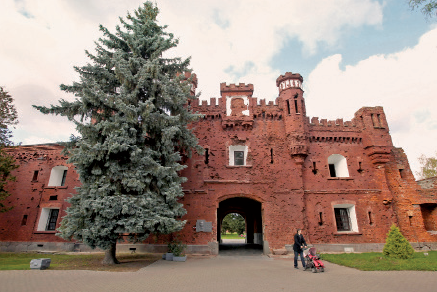More than $100,000 has been directed towards the second stage of a project to inventory and document Brest Fortress — the forts and external fortifications of which have a total length of 45km. This will confirm earlier data and enable an accurate map to be prepared.

The Brest Hero-Fortress Memorial Complex always attracts many tourists
Since January 2013, scientists have revealed 226 historical and cultural heritage sites at Brest Fortress and have researched over 9,000 records: maps, plans, drafts and fortress documents. Of these, they have selected over 800 which are considered most significant. Further fortifications not included in the memorial complex will receive attention in September.
By the end of 1914, the external line of fortress defence featured 14 forts, 21 intermediate defended posts, five defensive barracks, seven gunpowder cellars and 38 artillery batteries. Not all remain intact today, having been destroyed during combat or having succumbed to the ruin of time. Some continue to be used today, for other purposes; some have no access at all.
Workers of the Development Fund of Brest Fortress say that a detailed inventory and documentation will allow information to be updated and united — on destroyed and remaining fortifications. The bastion type 19th century fortress will then be united with two 20th century construction zones, as a uniform complex. An electronic database is planned, for research use, while the Atlas of Brest Fortress will become a visual display of the history and building of the fortifications, and of collected data. Work on the inventory and documentation should be complete by 2017.
The second phase of examination has won financing from the Ambassadors Fund for Cultural Preservation, which has previously funded restoration of the Tadeusz Kościuszko estate in Kossovo. Belarusian partners of the fund (since 2001) are the National Library of Belarus, the Marc Chagall Museum in Vitebsk and the Belarusian State University of Culture. In total, the programme operates in 125 countries worldwide.











